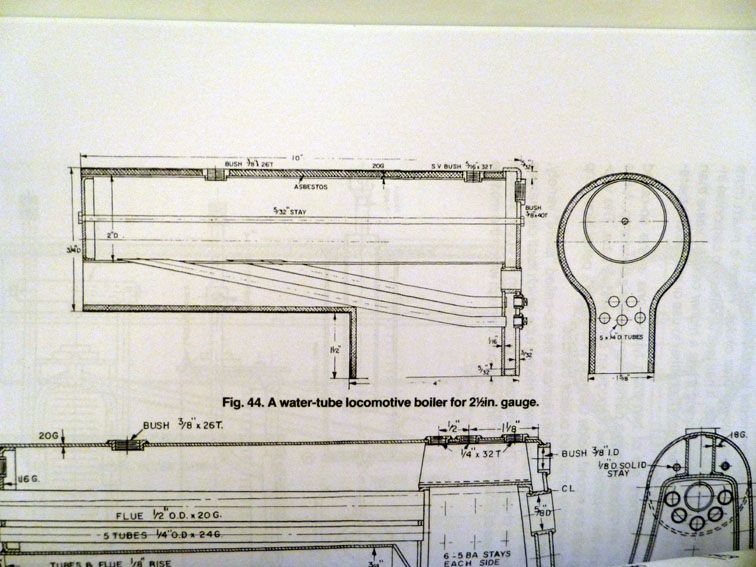The problem for simple type water tube boilers is the same as for firetube boilers with only one big flue – it doesn't matter how much heating surface you have the bulk of the heat in the gas flow just goes down the centre of the flue and uselessly out of the chimney .
For effective steam raising the hot gas flow has to be forced into contact with whatever constitutes the heating surface in any partcular boiler design and also has to pass over the heating surface with as near as possible ideal conditions for heat transfer .
In full size water tube boilers many water tubes are used , arranged quite close together in banks and often semi enclosed in ducting so that the hot gasses have no option but to pass over many tubes before exiting to exhaust . This is the normal arrangement where forced hot gas flow is used .
There is an alternative way of managing gas flow in full size boilers and that is to use an abnormally big firebed and very slow combustion rates so that the hot gasses spend a relatively long time in contact with tubes before exiting to exhaust . Most effective with solid fuel but possible with any fuel . Hot gas flow is usually unforced .
Forced means blower or high chimney designs with induced convection . Unforced means natural convection .
The above is general – there are many boilers which use some of each concept and some boilers which use novel designs .
Many boilers incorporate systems of baffles to direct hot gas flow .
Water tube boilers have been extensively used in land based power stations and in ships boilers . Use in locomotives has been limited , experimental and usually not that successful .
Large water tube boilers are often called Yarrow boilers – though strictly that term describes a three drum water tube boiler .
Hybrid boilers have been made with fire tubes and water tubes .
There are conceptual variations of the water tube boiler possible :
Lower part of water drum has large number of tubes sticking out radially on underside open to boiler and closed on outer end . Bit like lots of test tubes sticking out .
Similar but sticking out bits are solid metal .
Conjugate version of the test tube one with the tubes going radially inward into boiler . Generally much shorter and fatter tubes – more like tea cups .
Lots more – ask any questions you like .
Regards ,
Michael Williams .
Phil H 1.





